Papers by Mihaela Motaianu

Springer series on cultural computing, 2023
This chapter investigates how AR processes and user experience can be improved with Machine Learn... more This chapter investigates how AR processes and user experience can be improved with Machine Learning (ML) techniques and proposes a solution for an intelligent AR mobile application named “FURNITURE”. The fusion of AI with AR is not a new initiative but at the same time, its potential is yet to be maximized. Currently, Artificial Intelligence (AI) is applied to almost every domain. As is the case with other technologies, Augmented Reality (AR) can take advantage of the current advancements in AI to allow the creation of a new class of AR applications. The FURNITURE application was designed with two complementary functionalities: (a) to use an ML trained model to decide if an image of a piece of furniture corresponds to a pre-defined style, i.e. is authentic; (b) to augment the piece of the furniture shown in a real context with a history of that furniture style and a 3D model representative for that furniture style, the augmentation being conditioned by a previous validation of authenticity. The “FURNITURE” application uses Google AutoML framework to train an ML model for image classification, and Wikitude AR framework for the development of the mobile AR application. The designed purpose of the AR application is to support students in the fields of art, interior design, architecture and art history, professionals, and the public. The application demonstrates the concept and is open for future extensions, by expanding the object list that can be classified as corresponding to a certain style.
Design | Arts | Culture, 2021
This paper describes an experiential archaeology project carried out in three cities in Portugal,... more This paper describes an experiential archaeology project carried out in three cities in Portugal, Mação, Tomar and Lisbon and analyses, from a poetic perspective, the effects of Time on Matter using psychogeography to explore the urban landscape. In this case, psychogeography was used to experience a poem by the great Portuguese modernist writer and poet Fernando Pessoa, in the same way an observer experiences a cityscape. Photographs of ruins that show traces of degradation caused by the passage of time are presented in the form of four condensed visual narratives that visualise four different versions of the poem's verses.

ICVL Conference Proceedings, 2022
The period of Covid pandemic represented a challenge for the education of visual arts, such as in... more The period of Covid pandemic represented a challenge for the education of visual arts, such as interior design or architecture, some of the difficult subjects to be discussed online being those of "spatial organization" and the shape of objects. The solution that the present multidisciplinary team found during a research work was to immerse teachers and students under the form of digital avatars in a 3D virtual environment, designed according to a research theme, e.g. Early Modernism Design. Within the virtual space a lesson can be taught about the 3D real shape of the historical objects, like the Bauhaus furniture. The Virtual Learning Environment (VLE) was implemented on the Mozilla Hubs 3D online platform and was named "Experiment my shape!". The 3D models of the pieces of furniture were imported from Sketchfab, one of the most used online libraries of 3D models. After experimenting this virtual environment for online teaching at the Interior Design MA level at the National University of Arts Bucharest, teachers and students recognized its pedagogical efficiency and recommended it as an effective e-learning tool for students in Design and Architecture.
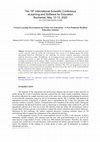
eLSE Conference Proceedings, 2022
During the Covid pandemic the physical locations for art education could no longer be used at th... more During the Covid pandemic the physical locations for art education could no longer be used at their capacity, while the online 2D environments have proven to be limited against the artistic educational objectives. Motivated by this challenge, the authors explored alternative e-learning solutions directed to online 3D platforms, by leveraging previous experience in performing certain educational scenarios on older 3D online platforms. The current paper proposes a modern Virtual Learning Environment (VLE) solution called “Creative Art-Studio”, implemented on the Mozilla Hubs 3D online platform, for the use of PhD students and teachers from the National University of Arts (UNA Bucharest), as a blended-learning tool for pandemic situations. This VLE was designed as a series of minimal spaces, hosts virtual artworks and allows the interaction of the visitors of the virtual exhibition and the evaluation of the students’ art productions.
This e-learning tool is intended to be complementary or, when needed, even an alternative to the face-to-face activities, thus supporting the concept of resilient education solutions.
ICERI2022 Proceedings, 2022
During the Covid pandemic, the authors explored alternative e-learning solutions directed to onli... more During the Covid pandemic, the authors explored alternative e-learning solutions directed to online 3D platforms, by leveraging previous experience in performing certain educational scenarios on older 3D online platforms. The current paper proposes a modern Virtual Learning Environment (VLE) solution called “Creative Art-Studio”, implemented on the Mozilla Hubs 3D online platform, designed for the usage of PhD students and teachers from the National University of Arts (UNA Bucharest). The VLE comprises a series of minimal spaces, hosting virtual artworks produced by PhD students during their research activities. The paper presents in detail the implementation and the usage of the VLE as a blended-learning tool and also for the evaluation of students’ artworks.
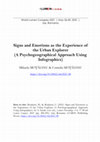
Proceedings Volume: World Lumen Congress 2021, Jan 13, 2022
Although we have the impression that we understand the urban texture in which we live, the city s... more Although we have the impression that we understand the urban texture in which we live, the city still holds surprises in the way it communicates everyday aspects, situations, and cultural history.The experience of the urban explorer, that flâneur/stroller mentioned by Guy Debord (1955) and the Situationist school, was until recently only a literary experience. The emotion of discovering the unusual in the urban daily life was communicated only in the form of textual narratives (Sinclair, 1997). Recently the psychogeographical approach to the city has become again a topic of interest. Although contemporary design transposed the behavioral codes of urban life into signs, it did not propose emoticons for the phenomenological experience of one who experiences the city. The original purpose of this paper is to translate the phenomenological experience of the urban explorer into infographics (which translates complex concepts into signs with condensed meaning) and to quantify and communic...
Books by Mihaela Motaianu

Springer, 2023
This chapter investigates how AR processes and user experience can be improved with Machine Learn... more This chapter investigates how AR processes and user experience can be improved with Machine Learning (ML) techniques and proposes a solution for an intelligent AR mobile application named “FURNITURE”. The fusion of AI with AR is not a new initiative but at the same time, its potential is yet to be maximized. Currently, Artificial Intelligence (AI) is applied to almost every domain. As is the case with other technologies, Augmented Reality (AR) can take advantage of the current advancements in AI to allow the creation of a new class of AR applications. The FURNITURE application was designed with two complementary functionalities: (a) to use an ML trained model to decide if an image of a piece of furniture corresponds to a pre-defined style, i.e. is authentic; (b) to augment the piece of the furniture shown in a real context with a history of that furniture style and a 3D model representative for that furniture style, the augmentation being conditioned by a previous validation of authenticity. The “FURNITURE” application uses Google AutoML framework to train an ML model for image classification, and Wikitude AR framework for the development of the mobile AR application. The designed purpose of the AR application is to support students in the fields of art, interior design, architecture and art history, professionals, and the public. The application demonstrates the concept and is open for future extensions, by expanding the object list that can be classified as corresponding to a certain style.

Augmented Reality in Education, A New Technology for Teaching and Learning, 2020
Environmental humanities is an emerging multidisciplinary field of research focused on identifyin... more Environmental humanities is an emerging multidisciplinary field of research focused on identifying the impact of modern human (including cultural) activities on the environment, as well as of environmentally friendly solutions. Environmental damage can have serious consequences for the present, as well as for the past, as in the case of archaeological sites, whose investigation becomes difficult and whose process of decay is accelerated. As these issues have not yet been addressed through effective and systematic educational solutions, this chapter proposes, as part of the environmental humanities strategy a digital humanities educational solution centred on the technology of Augmented Reality (AR). The IT application proposed aims to identify the areas of ecological risk and provide detailed information on the destruction processes, as well as the ability to connect with networks of specialists. The authors’ aims are to stimulate critical thinking focused on environmental issues, provide a solution for continuous learning for both specialists and the public, thus contributing to the protection of the environment and of archaeological subjects, and to further the development of sustainable activities through education and awareness.




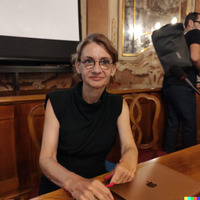



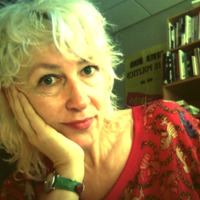

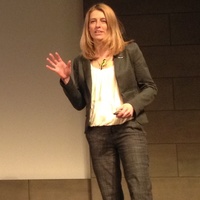
Uploads
Papers by Mihaela Motaianu
This e-learning tool is intended to be complementary or, when needed, even an alternative to the face-to-face activities, thus supporting the concept of resilient education solutions.
Books by Mihaela Motaianu
This e-learning tool is intended to be complementary or, when needed, even an alternative to the face-to-face activities, thus supporting the concept of resilient education solutions.